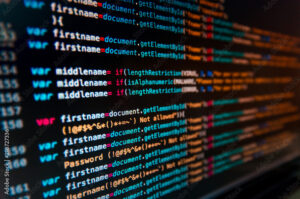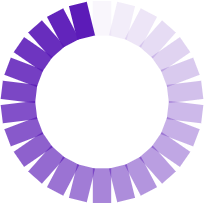What is a Program?
A program is a piece of code or set of that tells a computer how to perform a task. To use an analogy, a program is like a computer’s recipe. It contains a list of ingredients to a specific task.
Examples of programs
Here are some real life examples of programs you might already be familiar with.
Malware
Malware is a great example of a program in action. Malware is that tells a device to behave in a certain way. It has no user interface, because it’s not designed for the end user; it interacts directly with the device only.
Web browser
Web browsers are also a type of program. A web browser interacts with your computer, enabling it to locate and read web pages.
How programs are created
Programs are lines of code written by a human, and subsequently read by computing devices.
Programming language
- Diversity: There’s a wide range of programming languages, each with its own syntax, strengths, and purposes. Some languages, like Python and JavaScript, are versatile and widely used across various domains, while others, like R and MATLAB, are specialized for certain fields such as data analysis and mathematical computing.
- Syntax: Each programming language has its own set of rules and conventions for writing CODING AGENCY. Syntax dictates how commands and instructions are written, structured, and executed in the language.
- Paradigms: Programming languages can be classified into different paradigms based on their approach to problem-solving and code organization. Common paradigms include procedural, object-oriented, functional, and declarative programming.
- Performance: Different programming languages have varying levels of performance depending on factors such as their design, implementation, and the type of tasks they are optimized for. Low-level languages like C and C++ offer high performance but require more manual memory management, while higher-level languages like Python prioritize ease of use over raw performance.
- Community and Ecosystem: The strength of a programming language often lies in its community and ecosystem. A vibrant community contributes to libraries, frameworks, and tools.
Machine language
Machine language, also known as machine code, is the lowest-level programming language that a computer can understand directly. Here are a few points about machine language:
- Binary Representation: Machine language is expressed in binary code, which consists of sequences of 0s and 1s. Each instruction in machine language corresponds to a specific pattern of bits that the computer’s CPU can interpret and execute.
- Direct Interaction with Hardware: Machine language instructions are directly executed by the computer’s hardware without the need for translation or interpretation by software. Each instruction directly corresponds to a specific operation performed by the CPU or other hardware components.
- Platform-Specific: Machine language instructions are specific to the architecture and hardware of the computer system. Different CPU architectures have their own instruction sets, meaning that machine language programs written for one type of CPU may not run on another type without modification.
- Low-Level Abstraction: Machine language provides a very low-level abstraction of the computer’s hardware, dealing with concepts such as memory addresses, registers, and basic arithmetic and logic operations. Programmers working with machine language must have a deep understanding of the underlying hardware architecture.
- Difficult to Read and Write: Machine language instructions are typically cryptic and difficult for humans to understand and write directly. Each instruction corresponds to a specific binary pattern, making it challenging to write complex programs directly in machine language without making errors.

Programs vs. software






















































